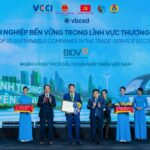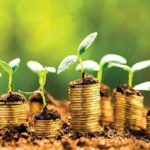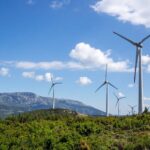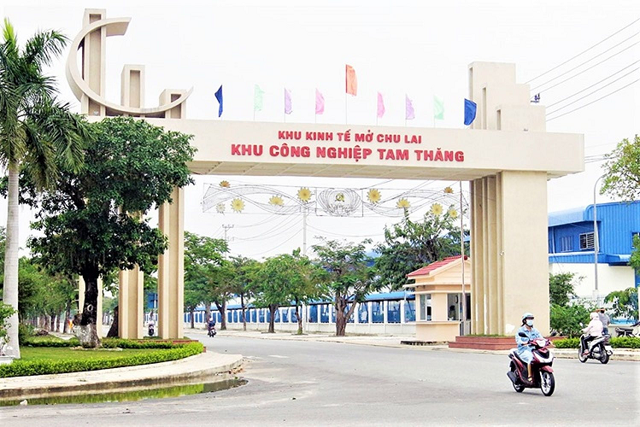Green Bond Market Development Context
The global green bond market is experiencing robust growth. According to Moody’s latest forecast in January 2025, the total value of sustainable bond issuance worldwide is expected to remain at $1 trillion in 2025, marking the fifth consecutive year of reaching this milestone [1]. Green bonds continue to account for the largest share, with an estimated value of $620 billion, a slight increase from 2024 [2].
In the Southeast Asian region, this market has been quite vibrant, with a total issuance value of over $43 billion from banks in Indonesia, Malaysia, and Thailand over the past five years. However, Vietnam has only issued $216 million in green bonds during the same period [3]. While the demand for capital to develop green projects is surging, the number of real estate businesses participating in green bond issuance remains limited. According to statistics, only a handful of real estate companies issued green bonds between 2016 and 2024, including BIM Land ($101 million) and Vinpearl ($425 million) [4]. Notably, in 2023, BIM Land and its subsidiary Thanh Xuan issued the first local currency sustainability-linked bonds worth VND 3.5 trillion ($150 million) with the support of IFC [5]. This indicates that despite the strong trend toward green real estate, there is still ample room for expansion in capital raising through green bonds.
Experts assess the potential for green bond development in Vietnam as significant. According to a World Bank report, to achieve the net-zero emissions target by 2050, Vietnam requires approximately $368 billion in investments by 2040 [6]. The green building sector alone is expected to attract around $80 billion [7]. Notably, the number of green buildings in Vietnam witnessed a sharp increase in 2024, with 163 certified projects, doubling the number from 2023.
As of now, the country has 559 certified green buildings [8], far surpassing the initial target of 80 by 2025. This signifies that the demand for capital to develop green projects will continue to surge in the coming years.
Status of Green Building Development in Vietnam
Vietnam’s green building market is witnessing exceptional growth. As of early 2025, the country boasted 559 certified green projects with a total floor area of 13.6 million square meters, far exceeding the initial target of 80 by 2025. The year 2024 marked a boom in green buildings, with 163 certified projects, 2.1 times more than in 2023 and triple that of 2022. Among the certifications, EDGE accounted for the largest share with 41.8% (258 projects), followed by LEED with 39.5% (208 projects).
In terms of geographical distribution, Ho Chi Minh City leads with 3.4 million square meters of certified green space, followed by Hanoi with 2.16 million square meters and Binh Duong with 1.59 million square meters. Notably, the green industrial segment dominates with a 56.5% share, followed by green offices (15.6%) and green apartments (14.2%) [9].
In the office sector, it is anticipated that around 10% of office buildings in Hanoi will be green in 2025, mainly in the Grade A segment. Specifically, the Hanoi market is expected to add 480,723 square meters of floor space from 19 projects by 2026, of which 75% will be Grade A offices with 14 projects [10].
Legal Framework and Supporting Policies
Vietnam has made significant strides in refining the legal framework for green bonds through several crucial documents. The Law on Environmental Protection of 2020 laid the fundamental legal groundwork, particularly in Article 150, which defines green bonds as a capital mobilization tool for environmental protection activities. Decree 08/2022/ND-CP provides detailed guidance on green bond issuance, encompassing capital usage purposes, fund management principles, and information disclosure regulations. Notably, public investment projects utilizing green bond proceeds are prioritized for sufficient capital allocation according to their implementation progress.
Regarding preferential policies, Circular 101/2021/TT-BTC stipulates a 50% reduction in service fees for both issuers and investors of green bonds, encompassing services such as listing registration, management, trading, securities registration, and custody. The Ministry of Finance is also considering additional tax incentives, including corporate income tax and personal income tax breaks for revenues derived from green bonds.
Simultaneously, the Ministry is collaborating with other ministries and sectors to formulate a pilot scheme for the domestic issuance of government green bonds [11]. According to a World Bank report, to realize the green growth trajectory toward 2040, Vietnam requires an additional investment of approximately 6.8% of GDP annually, equivalent to $368 billion. Of this, an estimated $59 billion is projected to be channeled into renewable energy, while $80 billion is earmarked for green building development [12].
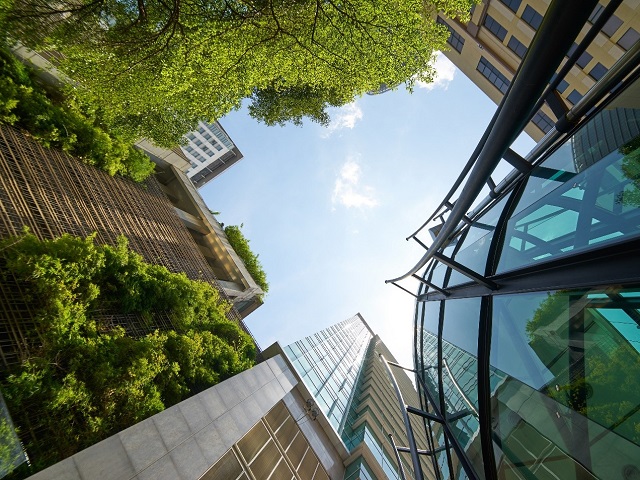
Illustrative Image
|
Opportunities and Challenges
The green building sector is steadily gaining prominence, with its global scale projected to surge from $588.37 billion in 2024 to $646.81 billion in 2025, registering a compound annual growth rate (CAGR) of 9.9% [13]. Some forecasts are even more optimistic, suggesting that the market could approach $1.1 trillion by 2030, reflecting a CAGR of 10.82% and underscoring the sustainability and profitability of this development trend [14].
In Vietnam, the construction industry is witnessing robust expansion, with an expected growth rate of 7% during 2024-2027. In 2023 alone, the industry attained a value of $95.8 billion and attracted $37 billion in FDI, marking a 32% increase from the previous year. According to the IFC, green buildings have the potential to attract up to $80 billion in investment in the coming years, fueled by the growing interest of international investors [15].
However, embracing green construction is not without its challenges. The most significant hurdle lies in the initial costs, which are 3-8% higher than those of conventional projects. This concern prompts many businesses to focus on short-term gains, especially when confronted with financial constraints.
Nevertheless, experts emphasize that the economic benefits of green buildings far outweigh the initial investment. Green buildings can yield energy cost savings of 15-30% and reduce carbon emissions by 30-35% through the adoption of environmentally friendly technologies and designs. Additionally, efficient water and waste management solutions can cut water consumption by 30-50% and slash waste treatment costs by 50-70% [16]. A prime example is the Meraki Ecopark project, where an investment of VND 2.8 billion led to annual electricity savings of nearly VND 4 billion through smart technology and design improvements. With a payback period of less than a year, this project exemplifies the feasibility of green construction when businesses optimize costs and leverage policy support [17].
Solutions and Development Orientations
To propel the growth of the green construction bond market, Vietnam needs to implement a comprehensive set of solutions encompassing legal frameworks, classification frameworks, preferential policies, and practical implementation mechanisms.
Regarding the legal framework, the Ministry of Natural Resources and Environment is finalizing a draft decision by the Prime Minister on environmental criteria and procedures for confirming the eligibility of green bond issuance projects. This decision aims to establish a transparent legal basis to foster the stable development of the market. Concurrently, adjustments are being made to the green classification framework, reducing the number of projects from 80 to 50 and focusing on seven key sectors aligned with economic sector codes and domestic green investment realities [18]. Businesses should integrate green building criteria from the design stage to meet the conditions for green bond issuance. Prioritizing international certifications such as LEED, EDGE, or BREEAM will enhance capital mobilization prospects, particularly as technical requirements from investors and issuing organizations become more stringent.
Preferential policies are pivotal in encouraging businesses to engage in green bond issuance. Currently, notable incentives include a 50% reduction in securities service fees for both issuers and investors of green bonds, along with tax breaks on personal and corporate income. Additionally, preferential capital allocation is granted to public investment projects utilizing green bond proceeds [19].
Furthermore, the development of the National Green Classification Framework, slated for completion in 2025, will serve as a compass for businesses and market participants. This framework will provide guidance for development while ensuring harmony between domestic requirements and international practices, thereby establishing a robust foundation for the long-term growth of the green bond market.
Future Prospects
Green construction bonds are presenting new opportunities for Vietnam’s real estate market, especially as sustainable development assumes top priority. In 2025, green real estate in major cities and the office segment are anticipated to flourish, with the number of green buildings potentially doubling due to heightened attention from the government, investors, and the public.
Capital mobilization through green bonds enables investors to enhance project values while catering to the demand for living and working spaces that are energy-efficient and environmentally friendly.
With Vietnam’s total green bond issuance value reaching nearly VND 33.5 trillion during 2016-2024, including VND 6.9 trillion in 2024 alone, the remarkable growth rate of 171% in the past year underscores the increasing emphasis on this funding source. It also highlights the potential for further breakthroughs in the coming years [20].
The year 2025 is expected to be a turning point, characterized by robust incentive mechanisms and legal frameworks. Tax incentives on income and reduced securities service fees will provide added impetus for businesses to issue green bonds. Moreover, the involvement of professional investment institutions, such as investment funds and insurance companies, is projected to enhance liquidity and deepen the market.
The emergence of new bond products, such as convertible bonds or sustainability-linked bonds, promises to offer real estate businesses more flexible financial options. As a result, green projects can more readily secure funding while aligning with sustainable development trends, unlocking significant potential for growth and long-term asset value appreciation.
[1] https://www.esgtoday.com/moodys-predicts-1-trillion-sustainable-bond-market-in-2025-despite-political-headwinds/
[2] https://carboncredits.com/sustainable-bonds-in-2025-could-be-a-1-trillion-market-moody-says/
[3] https://www.mckinsey.com/industries/financial-services/our-insights/can-vietnamese-banks-seize-the-green-bond-opportunity
[4] https://doanhnghieptiepthi.vn/thi-truong-trai-phieu-xanh-dang-am-dan-161241124175946334.htm
[5] https://www.ifc.org/en/pressroom/2023/vietnams-first-local-currency-sustainability-linked-bonds-to-boost-economy-support-climate-goals
[6] https://en.nhandan.vn/transforming-financial-mechanism-for-net-zero-post138298.html
[7] https://www.vgbc.vn/en/promoting-green-building-in-vietnam-and-lessons-learnt-from-europe/
[8] https://vneconomy.vn/vietnams-green-building-certifications-sharply-increase-exceeding-targets.htm
[9] https://moitruong.net.vn/viet-nam-co-559-cong-trinh-xanh-80818.html
[10] https://vneconomy.vn/van-phong-xanh-noi-len-nhu-mot-xu-huong-cua-thi-truong-bat-dong-san.htm
[11] https://thoibaotaichinhvietnam.vn/thi-diem-trai-phieu-chinh-phu-xanh-146605.html
[12] https://tapchitaichinh.vn/hoan-thien-khung-phap-ly-phat-trien-thi-truong-trai-phieu-xanh-tai-viet-nam.html
[13] https://www.thebusinessresearchcompany.com/report/green-building-global-market-report
[14] https://www.mordorintelligence.com/industry-reports/green-building-market
[15] https://www.trade.gov/market-intelligence/vietnam-green-building-outlook
[16] https://en.sggp.org.vn/vietnam-must-have-more-green-buildings-ministry-of-construction-post112667.html
[17] https://www.vietnam.vn/en/can-bang-chi-phi-cho-cong-trinh-xanh/
[18] https://vneconomy.vn/de-xuat-phuong-an-xac-nhan-du-an-dau-tu-thuoc-danh-muc-phan-loai-xanh.htm
[19] https://www.vietnamplus.vn/ky-vong-su-but-pha-cua-thi-truong-trai-phieu-xanh-trong-nam-2025-post1010029.vnp
[20] https://tapchitaichinh.vn/dong-luc-phat-trien-thi-truong-trai-phieu-xanh-viet-nam-nam-2025.html
– 14:00 24/02/2025
Sustainable Business: BIDV Ranks in Vietnam’s Top 10 for the Sixth Time in Trade and Service
The award was presented to the Joint Stock Commercial Bank for Investment and Development of Vietnam (BIDV) at the “Vietnam Sustainable Business Announcement Ceremony 2024 – CSI 2024” held on November 29, 2024, in Hanoi. This recognition celebrates BIDV’s dedicated efforts in sustainable development and its significant contributions to the country’s National Sustainable Development Strategy.
Sustainable Bond Issuance Success for BIDV
Recently, the Bank for Investment and Development of Vietnam (BIDV) successfully issued VND 3,000 billion worth of voluntary sustainability bonds, adhering to the International Capital Market Association’s (ICMA) Sustainability Bond Guidelines. This capital will enable BIDV to extend loans for projects that positively impact the environment and society.
The Power of Agricultural Land Ownership: Unlocking Investment Opportunities.
The Ministry of Natural Resources and Environment is currently drafting a resolution to pilot the implementation of commercial housing projects through the transfer of land-use rights.
A Brighter Future: The BIM Group’s Sustainable Development Strategy
Established in 1994, BIM Group has consistently focused on knowledge-based and efficient investment strategies, solidifying its position as a leading conglomerate in Vietnam. With a diverse range of business interests, the Group has played a pivotal role in driving the country’s economic growth and development.


